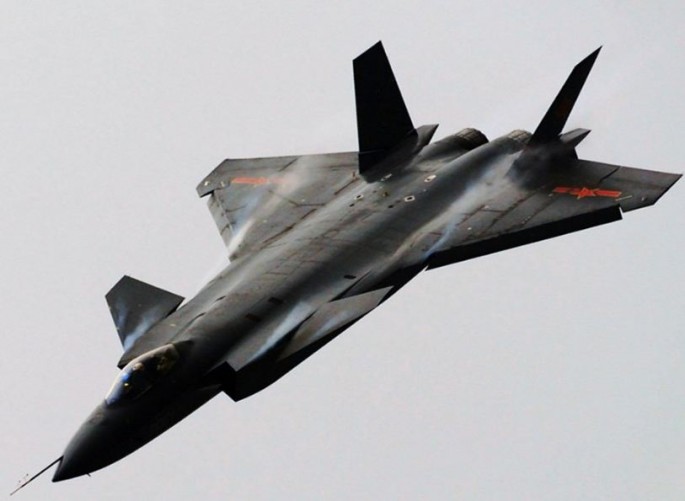China is apparently using prototypes of its non-operational and unarmed Chengdu J-20 stealth fighter in "show the flag" operations to scare its strategic foes.
Chinese media last week reported the J-20 "Mighty Dragon" taking to the air above the Tibetan Autonomous Region where China shares an unclear and potentially dangerous border with India. Now, Chinese media claims the J-20 might soon patrol the skies above the South China Sea to intimidate Japan, the United States and their Asian allies.
China has eight prototypes of the J-20 that are currently being tested. If all goes well, this stealth fighter should see service in 2018. Low rate initial production of the J-20 has commenced, however.
Revealing the J-20 flights in Tibet followed a warning by China's Ministry of Defense that India not deploy its supersonic BrahMos supersonic cruise missile, the fastest in the world and against which China has no effective defense, at Arunchal Pradesh state.
In early August, India announced the deployment to Arunachal Pradesh of an Indian Army BrahMos regiment operating the latest Block III version of this potent supersonic cruise missile. China claims ownership of Arunchal Pradesh state.
This military move was in response to a huge build-up of Chinese military forces all along the 4,057 kilometer Line of Actual Control (LAC) dividing China and India. Arunachal Pradesh is the most northerly state along the LAC and one of the most threatened by China.
To be deployed to Arunachal Pradesh will be the 864 Regiment of the Indian Army's 41st Artillery Division. The regiment will operate from four to six BrahMos batteries, and three to four Mobile Autonomous Launchers (MALs). The regiment will command up to 100 BrahMos Block III cruise missiles, each armed with a 290 kg warhead.
The fire-and-forget BrahMos Block III, the newest model of this feared weapon, possesses unique trajectory maneuver and steep-dive capabilities that allow it to hit targets hidden on the reverse slopes of mountains. It can steep dive up to 75 degrees.
Some observers said the J-20 was in Tibet for high-altitude testing. Chinese military analysts claim the People's Liberation Army Air Force (PLAAF) does test defense technology in high altitude conditions to ensure they operate properly.
Media speculation claims the PLAAF intends to use one or two of the prototype J-20 for patrols over the South China Sea where they might encounter U.S. Marine F-35B stealth fighters now stationed in Japan. Unlike the J-20, the Marine F-35s are combat ready and armed.
Any armed encounter with the F-35s will turn out badly for the J-20 because of the latter's underpowered engines and inferior electronics. The J-20 is also less stealthy than the F-35.



























